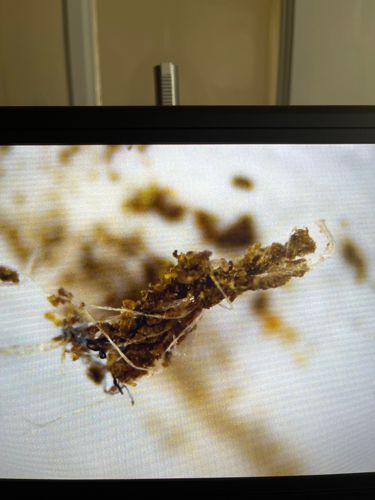Household Casebearer, Plaster Bagworm
Scientific Name: Phereoeca uterella
Order & Family: Lepidoptera, Tineidae
Size: Larvae (in case) are typically 8-15 mm (0.3-0.6 inches) long; adult moths have a wingspan of 9-13 mm (0.35-0.5 inches).

Natural Habitat
Indoors, especially in damp areas with high humidity, feeding on spiderwebs, animal hairs, and old fabrics. Can also be found outdoors in sheltered locations.
Diet & Feeding
Larvae are scavengers, feeding on a variety of organic materials including spiderwebs, animal hair (especially from pets), wool, felt, old silk, and sometimes synthetic fibers, mildew, and fungi. They are often found in dusty, neglected areas.
Behavior Patterns
Larvae construct a characteristic flattened, spindle-shaped case from silk and debris, expanding it as they grow. They drag this case with them as they move and feed, only protruding their head and thoracic legs. Pupation occurs inside this case. Adult moths are small, gray-brown, and generally poor fliers; they are nocturnal. The entire life cycle, from egg to adult, can take several months depending on conditions.
Risks & Benefits
Potential risks include minor damage to fabrics (especially those of animal origin like wool or silk) if an infestation is severe, though they are not typically considered major fabric pests like clothes moths. They can be a nuisance when present in large numbers. Benefits include their role as decomposers, helping to break down organic debris, and feeding on spiderwebs, which can be seen as a minor benefit indoors.
Identified on: 9/22/2025